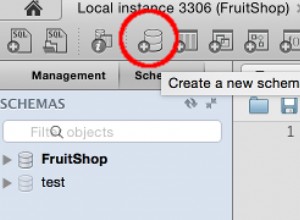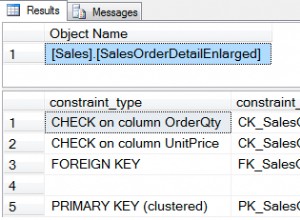Un'opzione consiste nel creare una tabella temporanea sul server e quindi utilizzare la funzione di caricamento in blocco per caricare tutti gli ID in quella tabella contemporaneamente. Quindi usa una clausola join, EXISTS o IN per eliminare solo i record che hai caricato nella tabella temporanea.
I carichi in blocco sono un percorso ben ottimizzato in SQL Server e dovrebbero essere molto veloci.
Ad esempio:
- Esegui l'istruzione
CREATE TABLE #RowsToDelete(ID INT PRIMARY KEY) - Utilizza un caricamento collettivo per inserire le chiavi in
#RowsToDelete - Esegui
DELETE FROM myTable where Id IN (SELECT ID FROM #RowsToDelete) - Esegui
DROP TABLE #RowsToDelte(la tabella verrà automaticamente eliminata anche se chiudi la sessione)
Esempio di codice (supponendo Dapper):
conn.Open();
var columnName = "ID";
conn.Execute(string.Format("CREATE TABLE #{0}s({0} INT PRIMARY KEY)", columnName));
using (var bulkCopy = new SqlBulkCopy(conn))
{
bulkCopy.BatchSize = ids.Count;
bulkCopy.DestinationTableName = string.Format("#{0}s", columnName);
var table = new DataTable();
table.Columns.Add(columnName, typeof (int));
bulkCopy.ColumnMappings.Add(columnName, columnName);
foreach (var id in ids)
{
table.Rows.Add(id);
}
bulkCopy.WriteToServer(table);
}
//or do other things with your table instead of deleting here
conn.Execute(string.Format(@"DELETE FROM myTable where Id IN
(SELECT {0} FROM #{0}s", columnName));
conn.Execute(string.Format("DROP TABLE #{0}s", columnName));




